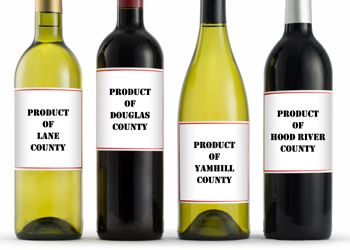Case for Equal Space

By Karl Klooster
If you’re not in the wine industry, you may have missed the story about an interesting piece of legislation recently passed by our neighboring state to the south.
On the other hand, if you have heard about it, you may either be applauding it or pondering the potential implications for Oregon as well as other winegrowing regions.
For those of you still in the dark, here are a few watts of basic enlightenment.
Sonoma County Vintners, a nonprofit group consisting of some 165 members, made a proposal to the California State Legislature about 10 months ago designed to impact everyone who makes wines in the county.
In essence, the SCV wanted a law passed requiring that every bottle of wine produced within the county carry the words “Sonoma County” on the label.
It didn’t matter whether or not producers who had the right to state Sonoma Valley or Sonoma Coast on their labels already so stated, they must also include Sonoma County just as prominently.
As redundant as this might seem to some, consistency was what proponents are after.
Since the request ostensibly came from the very same people who would have to comply with the bill’s requirement, lawmakers acted on it. Following the state Senate’s earlier 36–0 positive nod, the assembly voted 74–0 for approval of the bill in late August.
At last report, Governor Arnold Schwarzenegger’s signature remained the only formality for the bill to become law, though it actually won’t be fully enforceable until Jan. 1, 2014, based on a prescribed, three-year phase-in period.
Like the Legislature, the vast majority of industry members and others either affected by or interested in the county’s wine fortunes appeared to favor this move.
However, some Sonoma County-based wineries oppose the bill, though their reasons have not been clearly articulated; There will likely be a certain amount of inconvenience and obviously some additional cost involved with label changes, but if they begin now the cost could be distributed over three years.
A strong argument in favor contends that most consumers outside California don’t know where Sonoma County appellations, such as the Alexander, Dry Creek and Russian River valleys, are actually located.
The new labeling law would clarify that lack of knowledge. It’s also informative to know that the Napa, Lodi and Paso Robles growing regions had similar laws put into effect more than 20 years ago.
Interestingly, only one of those three, Lodi, is actually a county. The others are winegrowing regions defined by American Viticultural Area delineations rather than by governmental jurisdictions.
In the case of Sonoma County Vintners, it’s also significant to note that in June, they were awarded a Value-Added Producer grant of $299,638 from the U.S. Dept. of Agriculture to promote Sonoma County wines across the country.
SCV’s press release states: “The awarded funds will be used in several regional and national shared marketing programs and events, including new programs targeting the Generation X and Millennial wine-drinking population and top influencers in the wine trade.
“These programs will benefit wineries and growers across the county, and will be executed in partnership with the wine and tourism organizations in Sonoma County.”
It’s certainly within the realm of possibility that the vintners were motivated to push for the legislation given the potential of receiving this grant. Only 13 organizations in California received funding for the 2010 program.
The question then is why doesn’t every AVA or county in California that thinks the wineries and winegrowers within its boundaries would benefit from such regulation insist on the same thing? After all, there is now plenty of precedent.
And what of us here in Oregon? Right now, a winery that makes a wine from grapes grown within a given AVA has the right to put that AVA on the label but doesn’t have to do so. It has merit as a marketing approach, but it remains an option.
Also, in direct contrast to the new Sonoma County law, as well as the ones preceding it, the Oregon winery does not have to be in that AVA. Here, the concept is to differentiate among places of origin, not where a particular processing facility is located.
One wonders whether or not members of the Oregon wine industry would favor a law requiring wineries to put the AVA on their labels whenever the wine so qualifies.
What if the members of one particular AVA went to Salem, as the Sonoma County Vintners went to Sacramento, to persuade legislators to enact a law just for them?
Oregon may be close to California physically, but in many ways, including wine-wise, it’s worlds apart philosophically. So, would such an idea be beneficial for us? We’ll ask some Oregon wine industry people and get back to you.












